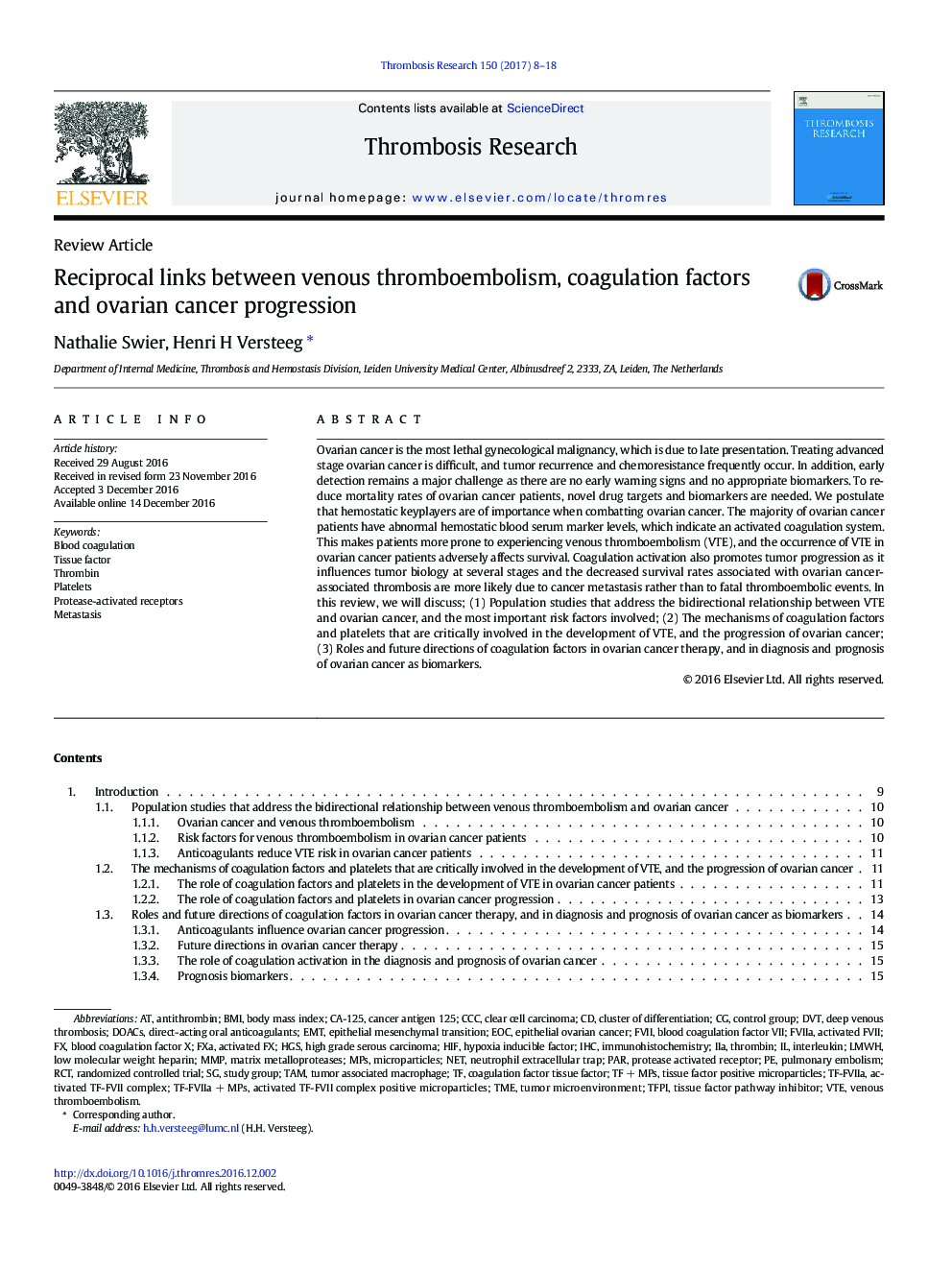| Article ID | Journal | Published Year | Pages | File Type |
|---|---|---|---|---|
| 5621822 | Thrombosis Research | 2017 | 11 Pages |
Abstract
Ovarian cancer is the most lethal gynecological malignancy, which is due to late presentation. Treating advanced stage ovarian cancer is difficult, and tumor recurrence and chemoresistance frequently occur. In addition, early detection remains a major challenge as there are no early warning signs and no appropriate biomarkers. To reduce mortality rates of ovarian cancer patients, novel drug targets and biomarkers are needed. We postulate that hemostatic keyplayers are of importance when combatting ovarian cancer. The majority of ovarian cancer patients have abnormal hemostatic blood serum marker levels, which indicate an activated coagulation system. This makes patients more prone to experiencing venous thromboembolism (VTE), and the occurrence of VTE in ovarian cancer patients adversely affects survival. Coagulation activation also promotes tumor progression as it influences tumor biology at several stages and the decreased survival rates associated with ovarian cancer-associated thrombosis are more likely due to cancer metastasis rather than to fatal thromboembolic events. In this review, we will discuss; (1) Population studies that address the bidirectional relationship between VTE and ovarian cancer, and the most important risk factors involved; (2) The mechanisms of coagulation factors and platelets that are critically involved in the development of VTE, and the progression of ovarian cancer; (3) Roles and future directions of coagulation factors in ovarian cancer therapy, and in diagnosis and prognosis of ovarian cancer as biomarkers.
Keywords
activated FVIIVTEHIFLMWHRCTTMECA-125FVIIDOACsHGSCCCFVIIaFXaTFPIIIaEOCBlood coagulation factor XMMPRandomized controlled trialPulmonary embolismantithrombinCancer antigen 125epithelial mesenchymal transitionBlood coagulationImmunohistochemistryIHCinterleukinTAMVenous thromboembolismDVTDeep venous thrombosisThrombinneutrophil extracellular trapParTumor associated macrophageEMTNETcluster of differentiationdirect-acting oral anticoagulantsMicroparticlesEpithelial ovarian cancerClear cell carcinomabody mass indexBMITissue factorHypoxia Inducible FactorMatrix metalloproteasesMetastasisTissue factor pathway inhibitorTumor microenvironmentMPsLow molecular weight heparinprotease activated receptorPlateletsStudy groupcontrol groupprotease-activated receptors
Related Topics
Health Sciences
Medicine and Dentistry
Cardiology and Cardiovascular Medicine
Authors
Nathalie Swier, Henri H Versteeg,
